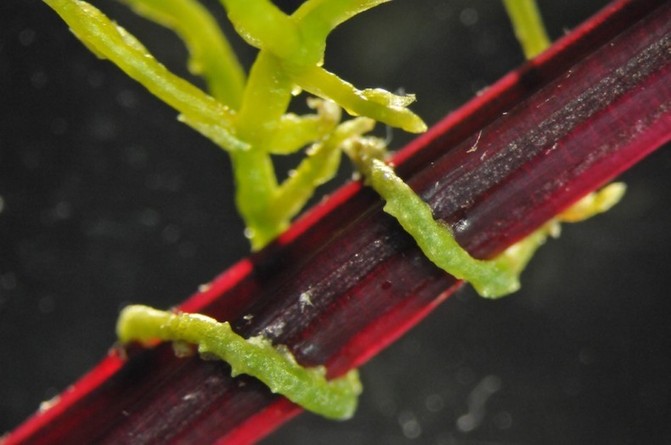Parasitic Plant Strangleweed Injects Host With Over 9,000 RNA Transcripts
Virginia Tech professor and Fralin Life Institute affiliate Jim Westwood has made a discovery about plant-to-plant communication: enormous amounts of genetic messages in the form of mRNA transcripts are transmitted from the parasitic plant Cuscuta (known more commonly as dodder and strangleweed) to its hosts.
Using Illumina next generation sequencing technologies to sequence the tissues of the host and an attached parasite, the team found that the number of genes that gets passed into the host depends on the identity of the host. The tomato plant received 347 of the strangleweed’s mRNAs, whereas the Arabidopsis received an astonishing 9514 mRNAs. When Arabidopsis plant receives this many mRNAs, the total genetic material of tissues in contact with the strangleweed is about 45% from the parasite.
The new quantitative result builds on Professor Westwood’s prior discovery of RNA transfer between the parasitic plant and its host plants. In the prior study, Westwood found that when the strangleweed uses its haustorium (piercing appendage) to penetrate the stems of its host plants, it passes on its own RNA to the host, though only tens of mRNAs were identified. The discovery challenged our understanding that mRNAs are mainly kept within cells.
But now the research team has quantified the extent to which the messages are passed. mRNA stands for “messenger RNA” and are the snippets of genetic information that are created from DNA. Typically an mRNA molecule is “read” by a molecule machine known as a ribosome and turned into a protein which carries out particular functions in the cell. And usually, more mRNAs means more protein. Therefore, the conversion from DNA to mRNA is one way to amplify or control the activation of a gene.
It is not yet clear what are the functions of the transmitted genes but bioinformatic analysis shows that hydrolase activity, metabolism and response to stimulus gene groups were among the most represented in those that crossed the species bridge.
Westwood has determined that the host plant may be receiving orders of a kind from the parasitic plant, such as lowering its natural defense system so that the strangleweed can more easily attack them.
The findings by Westwood, Professor of weed science, plant pathology and physiology at the College of Agriculture and Life Sciences, is even more surprising when considered against prior thought that mRNA is unstable, short-lived and fragile.
The discoveries also opens new avenues in the research of the eradication of parasitic plants such as broomrape and witchweed, two plants that pose serious threats to legumes and other crops. This also has intriguing implications for increasing efficiency of yields.
Future plans include expansion of such research to other organismal domains, such as fungi and bacteria, also exchange the mRNA. But the meaning and the outcome of the transmitted messages remain yet unclear and work must be done to find out what the plants are saying to each other.
Source: www.neomatica.com
Pretty freaky….
See on Scoop.it – Virology and Bioinformatics from Virology.ca
